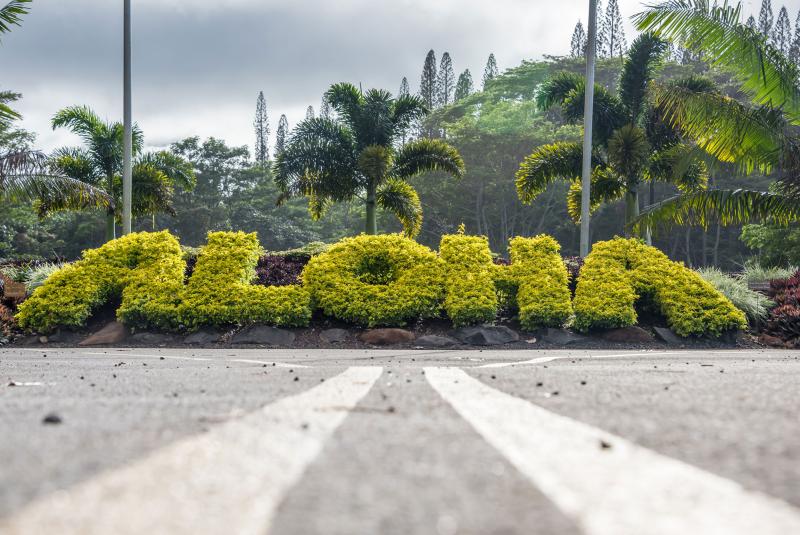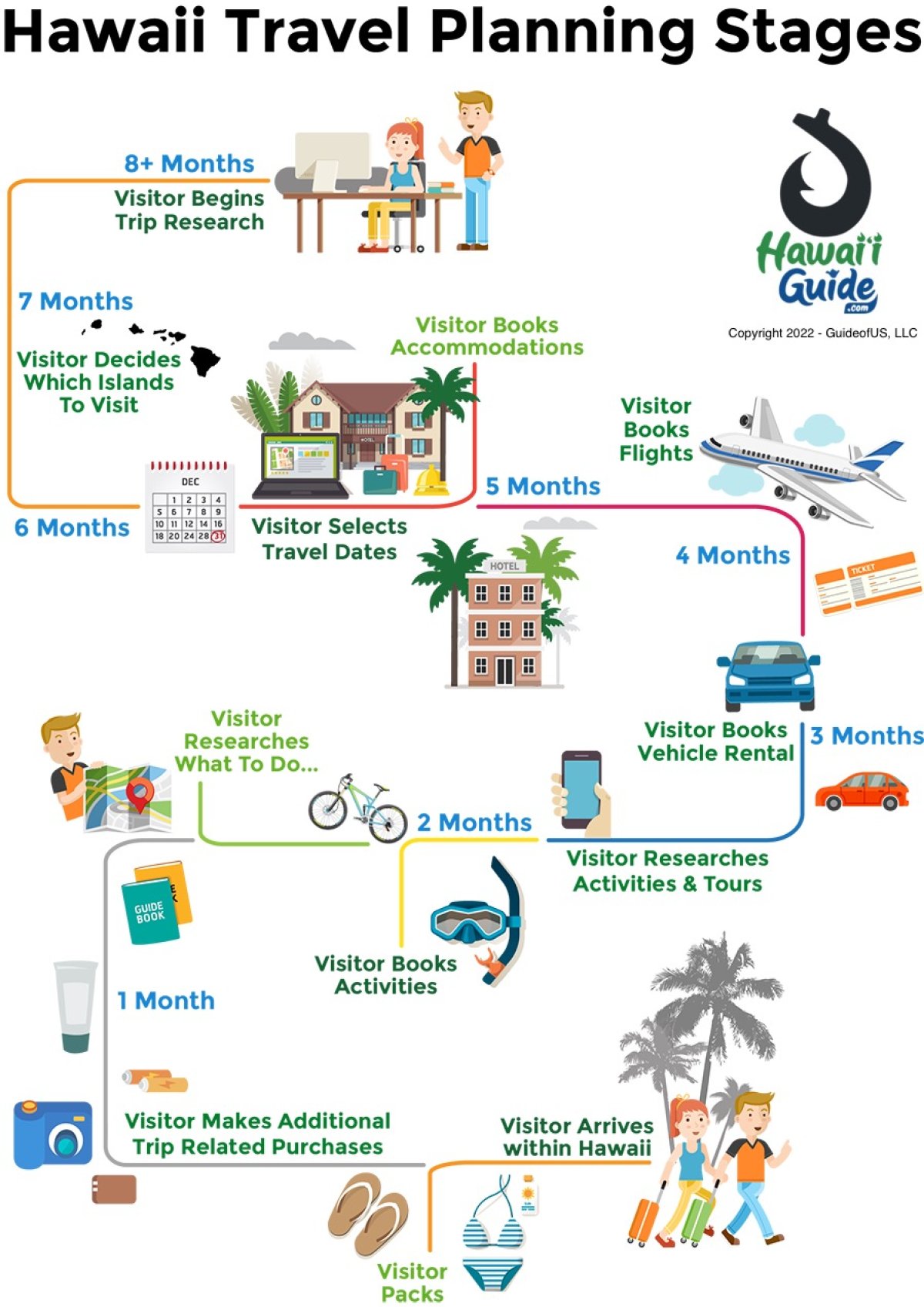11-12-2025

Hawaii Tourism Statistics
Aloha! This article may link to trusted Hawaii resources (like Discount Hawaii Car Rentals) at no extra cost to you. Mahalo for your support!
Hawaii Visitor & Traveler Data

Hawaii Visitors by Island 2024
If it's Hawaii tourism data you're looking for, then you're in the right place. We'll cover the latest tourism trends (within the last 1-3 years) on the Hawaiian islands and provide a series of graphics and summarized data to give you a good idea of what's happening by the numbers.
The adjacent graph shows the Total ARRIVAL Data in 2024 to each island (including multi-destination/island arrivals). You can also view our historical 2023 data graph, 2022 data graph, 2018 data graph, 2016 data graph, and 2006 data graph for comparison.
A pie chart is not truly the best format to display the visitor totals for the various islands as the number of visitors shown in the chart is greater than the true total, as many visitors go to more than one island. However, for our purposes, it should give you an idea of how many visitors (percentage-wise) are arriving/visiting each island. Just keep in mind the actual arrival numbers are "inflated" a bit. A more accurate way to look at this is 'Visitor Days,' per island, but these percentages seen here provide an accurate overview of each island's visitation.
Total Visitor Arrivals by Island
2026 Hawaii Travel Projections
General Expectations for 2026
The travel outlook for Hawaii in 2026 presents a cautiously optimistic picture, with varying recovery trajectories across the islands, particularly for Maui following the 2023 wildfires. Here’s an updated overview:
Visitor Numbers and Spending:
- Economic Contributions: The tourism industry remains a vital component of Hawaii’s economy, with visitor spending anticipated to increase from $21.1 billion in 2023 to $23.6 billion by 2026.
Maui’s Recovery:
- Post-Wildfire Rebound: Maui continues its recovery from the August 2023 wildfires with efforts to rebuild and revitalize the tourism sector. While West Maui has reopened to visitors, the pace of recovery is gradual, and the area still faces challenges in restoring its tourism industry.
- Economic Impact: The wildfires significantly affected Maui’s tourism, with visitor arrivals and spending experiencing notable declines. Recovery efforts are ongoing, focusing on rebuilding infrastructure and restoring visitor confidence.
Island-Specific Outlooks:
- Oahu: Anticipated to experience steady growth in visitor numbers, with a gradual return of international travelers, including those from Japan, contributing to the island’s tourism recovery.
- Kauai and Hawaii Island: Both islands are expected to see continued growth in visitor arrivals and spending, with their unique attractions drawing steady interest from travelers.
Sustainable Tourism Initiatives:
- Focus on Sustainability: Hawaii increasingly emphasizes sustainable tourism practices, encouraging visitors to engage in eco-friendly activities and supporting local communities. This shift aims to preserve the islands’ natural beauty and cultural heritage for future generations.
As Hawaii navigates the complexities of tourism recovery, travelers planning visits in 2026 and 2027 can look forward to a destination that is not only rebuilding but also striving to offer more sustainable and culturally enriching experiences.
Hawaiian Islands Demand
Estimated Hawaii Visitors by Month
The tabular chart shown below gives the breakdown of visitors in the islands on a month by month basis (color coded per island), based on data from recent visitor reports.
Visitor Days & Visitor Expenditures
In considering the "health" of the tourism market, one must also put emphasis on the two factors that are the most important: "visitor days" and "visitor expenditures."
Mahalo for the tip by 'amberloo' at TripAdvisor. In her words, "If there are more visitor days and more money being spent annually over the long-term, the industry is healthy regardless of any other factors; such as mere arrival totals. The goal of many government planners is to increase "days" and "spending" while limiting (or even decreasing) arrival counts."
Why limit arrival counts you might ask? One has to consider tourism "capacities" of the islands and how that will affect future trends. Maui and O'ahu likely reached their carrying capacity (for visitors) years ago, thus have few remaining competitive development opportunities and will not have the statistical fluctuations or upside growth potentials seen on Kaua'i. In fact, due to growth in recent years, Kaua'i has now about reached its own carrying capacity pending completion of on-going development.
Hawaii Visitor Graphs
Individual Hawaiian Island Data
These statistics are "arrival" data - meaning visitors who arrived in the islands (either from the mainland US, abroad, or from another island).
When viewing these statistics, we encourage visitors to keep the geographic size of the islands in mind. For example, the Big Island and Kauai have very similar trends in arrivals. However, the Big Island is significantly larger geographically speaking than Kauai (in fact, it is larger than all of the other islands combined) so these visitor numbers alone cannot tell the complete story. Kauai and the Big Island may very well have the exact same number of visitors any given month, but the size of the island will also determine how "crowded" it feels.
Big Island of Hawaii Visitor Data
The largest in the chain typically averages between 130,000-175,000 arrivals each month. Excluding the summer "hump" felt through all the islands, the number of arrivals fluctuates much less than some other islands in the chain, so visitation is usually about the same in Hawai'i. The events we noted on the best time to travel to Hawaii page, that are held each spring and fall, can increase visitor ratios on the island. The volcanic eruptions that periodically occur are also likely to impact travel numbers to the Big Island at any given time.
Maui Visitor Data
The second largest island in the chain typically ranges between 150,000-225,000 arrivals each month. The summer "hump" is by far the largest period of arrivals, but there are also significant spikes at other times during the year, most notably around the Christmas holidays. The reopening of West Maui, excluding historic Lahaina Town following the devastating wildfires in August 2023, has positively influenced arrival numbers. Generally, however, we believe Maui visitor numbers will be recovering from large declines following the fires for an extended time.
Kauai Visitor Data
The fourth largest island in the chain typically ranges between 100,000-130,000 visitors each month. Kauai, in general, is a much quieter island (arrival wise) when compared to the likes of the other islands in the chain. But that may be due to its size and "theme" (all things green). The summer "hump" is the only really busy time on the island, though it's not as distinct as the "hump" Maui and Oahu experience. As a side note, the occasional winter and spring storms and subsequent Kauai closures will likely impact visitor arrivals after this period.
Oahu Visitor Data
The third largest island in the chain typically ranges between 450,000-560,000 visitors each month. As you can quickly see, that number significantly dwarfs the other islands' arrival data. Oahu is widely popular with visitors abroad, and given that approximately 75% of the state's population lives on this single island, the arrival data can skew accordingly. The island's diverse attractions, from the bustling city of Honolulu to the historic sites of Pearl Harbor and the scenic North Shore, continue to draw the most visitors among the Hawaiian Islands.
Typical Hawaii Visitor Timeline

Typical Visitor Planning Timeline
More Information:
Hawaii Weather page or Selecting a Hawaiian island to visit
If you want even more detailed tourism specifications, please visit the Hawaii Department of Business, Economic Development & Tourism.
Molokai & Lanai Visitor Data
These two islands only make up slightly more than 1% of all visitor arrivals combined. If you're heading to either of these two islands and are curious about this data, we suggest you look at the detailed statistics provided on the Hawaii Tourism Authority website.

Updated on: 11-12-2025
Published by: John C. Derrick
Founder & certified Hawaii travel expert with 20+ years of experience in Hawaii tourism.
You may also be interested in...
Affiliate Disclosure: We may earn commissions from some travel partners (like Amazon or Expedia) which helps us maintain this site. These links are at no extra cost to you and don't impact our honest & unbiased recommendations. Remove all the ads →
Article Published/Updated: 11-12-2025







